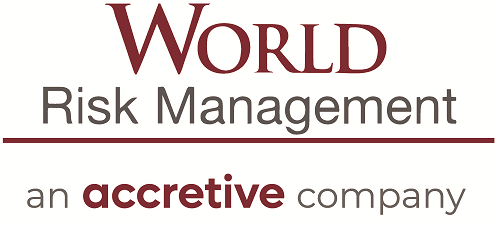Claims digitization will be the over-riding theme for 2017 as these capabilities touch every aspect of the claim landscape. A review of some of the more costly events in 2016 highlights the role of technology and its impact on all areas of claims going forward.
Natural catastrophe events in 2016 dwarfed those from 2015. Per Swiss Re, the first six months of 2015 resulted in a total loss of $46 billion (US) in natural catastrophe events. For the same period in 2016, $68 billion (US) in natural CAT losses were realized — an increase of almost 50 percent. Earthquakes in Ecuador and Japan, wildfires in Canada, and flooding in Europe, all contributed to what will amount to a very large CAT loss year.
From a consumer point of view, overall loss costs from 2010 to 2015 declined by 30 percent for US-based homeowners across a broad number of areas, including wind events (down 50 percent); hail by more than 20 percent; fire (steady decline, no figure available); and theft loss costs, which decreased by 50 percent.
Several factors will impact claims in 2017, ranging from new technology such as autonomous cars and drones to applying analytics to the claims process itself. Among those that will have the greatest influence are:
1. Market trends: autonomous cars
The emergence of self-driving cars will continue unabated into 2017. It raises questions of liability regarding the self-driven car ecosystem — with computers, sensors, software and intelligent infrastructure taking more responsibility for the operation of the vehicle, how will culpability for accidents be determined?
In our current reality, liability accrues to the driver of the vehicle that caused the loss event, however that is determined. With a physical driver relegated to being a monitor of an automated process, this does not seem to be the best way to determine fault going forward.
2. Big data
Our ability to collect and disseminate data has never been more prolific, and that will escalate into 2017 and beyond. Sensors now exist, and the communication infrastructure has evolved to the point where data can be gathered, communicated and analyzed very quickly to arrive at informed decisions/recommendations around potential loss events. This capability can help drive down the severity of the loss event and increase the probabilities of stopping the loss before it occurs.
3. Cyber liability
Cyber liability continues to be an area of increased focus for insurers, and most offer cyber liability products to policyholders that are primarily aimed at the loss of data due to an intrusion. However, there were developments during 2016 that suggest loss of data and the costs to recover it may be far from sufficient.
For example, recent losses in the Iranian oil fields due to orchestrated cyber attacks need to be examined closely. These cyber attacks resulted not only in data loss, but also in physical buildings and contents lost through fires and explosions proximately caused by the intrusion.
This is a whole new realm in the cyber liability arena, and one that most insurers are not including in their products for this space. This claim and loss issue will command significant attention going forward.
4. Claims core systems: Ready for a comeback?
Pivoting to the technology front, although claims enterprise system replacement or augmentation dominated in 2005–2012, the focus by insurers more recently has been on policy and billing administration systems. However, claims-driven technology capabilities are again receiving attention, primarily in the areas of digital capabilities. While the prior activity resulted in a significant increase in claim process automation, there remain significant gaps in analytics, augmentation of internal insurer data with third-party data, and collaboration amongst the eco-system players in claims.
First Notice of Loss (FNOL) processes and the collection of information by the claims adjuster still involves significant time and entry of data. One clear trend addressing this is the increasing use of robotic process automation (RPA) to automate data entry activities. If done correctly, RPA replicates the activity of a human in standard data entry by gathering data from multiple sources, standardizing and formatting the data for ingestion, and applying it to the appropriate aspect of the workflow.
5. Applying predictive analytics and AI to claims
There are also many opportunities in the claims process for the use of predictive analytics, although adoption has been slow. There are clear use cases for specific areas — including claim fraud and loss and reserve forecasting — and clear areas of opportunity such as loss forecasting. The benefits of quickly assessing a claim’s severity, forwarding it to the proper claim expert, involving all applicable claim services, and coming to a fair and expeditious settlement to avoid litigation are clearly understood. One key area enabling accurate loss forecasting analytics is the incorporation of sensor-driven data — such as from boilers or related energy-producing vessels where heat, pressure, load and other key data elements can be monitored.
Predictive analytics can also help to prevent fraud. These predictive tools are used to identify data elements likely to or potentially leading to fraud, e.g., auto collision claim coming in from New York City from areas with high congestion; late model sports cars; accident types that suggest fraud (such as rear-end accidents with neck injuries). All these factors tell a story, and predictive tools can help analyze that information.
6. Artificial intelligence
Another technology enabler in claims that will receive increased focus in 2017 is artificial intelligence (AI). Coupled with image and video analytic tools, AI can “learn” how to provide increasingly accurate loss estimates based on a picture or video. Of course, AI has other areas of application in the claims value chain. Subrogation and salvage are two technical areas within claims that will benefit from having AI applied to the existing analytical models; subrogation, specifically, is an area that many insurers feel is under-utilized and sub-optimized.
7. Prioritizing process optimization and customer engagement
Optimizing the overall claims process for policyholders will be another key focus for 2017. Automation efforts in the past decade focused on automating and consolidating internal claims activities. Now, providing smart, easy-to-use and intuitive capabilities for external audiences, like policyholders and claimants is being addressed.
One of the key touch points with customers is in paying their claims, an area critical to customer satisfaction and policy renewals. Start-ups in the insurance space are using automation to address the claim payment process (as well as the quote and purchase process).
Lemonade and Trov are both making the claims process as painless as possible for their insureds. Trov is using text messages to provide a basic “First Notice of Loss” channel. Lemonade accepts a picture or video of the damage, and attempts to adjudicate the claim based on that information and a series of algorithms, as well as information from the policyholder.
8. Drones
Drone use is another utility that is going to make a significant difference in commercial claim processing for instruments that are difficult, expensive or even dangerous to perform damage assessment upon. This includes: bridges, oil well derricks, cell towers, tall smokestacks, and radio and TV towers, which are difficult to access for direct observation and measurement of damage due to hail, wind, precipitation and the like.
Drones provide highly detailed images that can be used for image analytics to assess damage. Having both pre- and post-loss imagery will provide for better damage estimates. The images also can be used to estimate other parameters such as height, distance from other physical objects like bodies of water adjacent to properties. With FAA regulatory clarification, the use of drones in commercial insurance will increase significantly and use cases for personal lines will emerge as well once FAA regulations are fully implemented and understood.
9. Blockchain
Finally, the reverberations from the blockchain technology wave will be felt in the claims process. At a minimum, the potential for reducing fraud in fine arts, classic cars, and related high-value insured objects sector will be significant. If blockchain can be leveraged to create public ledgers where high-value objects are identified and tracked, the occurrence of forged items should diminish over time. There are also potential benefits in areas such as title insurance, where title information can be shared in a public ledger available to multiple parties of the insurance and real estate transaction.
Adopt a test-and-learn approach
There were many opportunities in 2016 to apply digital capabilities to the claim process, and that will only increase in 2017. As with any investment, keeping the business case in mind is always important; however, insurers should take a “test and learn” approach and not expect immediate returns on their investment. The learning aspect will be valuable, and should be recognized as a “benefit” too.
Sources:
PropertyCasualty360
iStock
Article: by Tom Rubenacker

